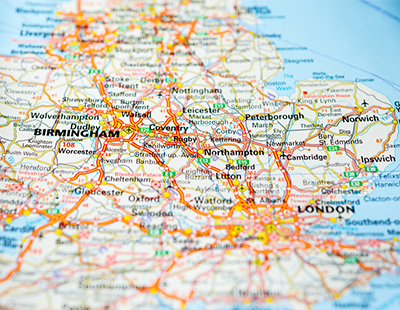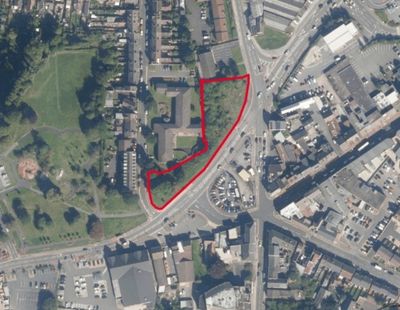These places also have access to ‘Good’ and ‘Outstanding’ schools on a per capita basis, while basic services such as doctors’ surgeries, bus routes and a good retail offering are comprehensively and evenly distributed here. Internet download speeds, an increasing priority for many people, are also exceptional. Finally, these are the areas where housebuilding has fallen behind government projections for housing need in the past three years, Knight Frank revealed.
Knight Frank said Covid-19 has prompted a shift towards people moving to the country, and finding the right balance between home and office working is set to become more important even after the pandemic.
As a result, the firm believes it is perhaps no coincidence that the areas it identified offer a balance between rurality and connectivity, being places ‘where local communities can thrive, whilst also being close enough to access nearby cities’.
This talks to the new balance between town and country, and the rise of walkable mixed-use communities – whether that be an urban or a rural village, Knight Frank adds.
Charlie Dugdale, a partner in the land agency and consultancy team at Knight Frank, said: “Essentially, Surrey Heath, Tameside, East Hertfordshire, Fareham and Chesterfield are five areas where people will get the best bang for their buck; where quality of life is maximised for a given value. These are likely to be attractive areas for future development.”
He added: “A recent report by the Building Better, Building Beautiful Commission recommended a new framework that ensures we’re building the right development in the right place. What this new research shows is how we might start to use geospatial technology to identify the most sustainable locations for future development.”
Oliver Knight, head of residential development research at Knight Frank, said: “The government’s target of delivering 300,000 homes per annum looks increasingly challenging. As demand for new housing continues to grow, identifying those areas which already deliver on a number of key criteria – including infrastructure, schools, and amenities – means housing delivery should be more efficient and more sustainable.”
Dugdale added: “This method we are using to identify areas for new housing is focused on an ambition to stimulate sustainable developments. Walkable mixed-use neighbourhoods remains the Holy Grail – developments that support livelihoods as well as living – particularly in a world where living trends have been permanently affected by the Covid-19 pandemic.”
He said Covid has served to ‘accelerate an existing trend’ towards village neighbourhoods, both urban and rural.
“We believe we have identified the locations that account for this change in preference and lifestyle.”
Stuart Baillie, head of planning at Knight Frank, concluded: “We are not suggesting that securing planning in these areas is going to be straightforward. Each of these areas has ‘protect’ characteristics in the context of existing green belt, heritage and ecology considerations – but that is precisely what makes them attractive places to live.”
He said landowners and developers will need to work in partnership with Local Planning Authorities to achieve a balance of high-quality and viable schemes that complement yet contribute towards the longer term sustainability of these areas via ‘good growth’.
The lowdown on Knight Frank’s top five hotspots
Below, Knight Frank has offered the following descriptions of its top five development hotspots, spanning from the South Coast of England to the North West.
Surrey Heath includes 10,800 acres of greenbelt and woodland, covering 46% of the local authority. This landscape offers amenity to residents whilst being a restriction on future development. Surrey Heath scored among the highest of our hotspots in its broadband coverage, with over 99% of premises now covered by superfast broadband.
Tameside is a district within close proximity to Manchester city centre, and scored among the highest for house prices within reach of local earners. House pricing is considered relatively affordable for its amenity provision, with a value to earnings ratio of 6.4x. The authority has been earmarked for 8,850 homes by 2037, supported by new train stations at Dewsnap in Dukinfield, and Gamesley on the border with Derbyshire. The new housing will support more than 175,000 square metres of new employment space at Ashton Moss West.
East Hertfordshire is a predominantly rural district with rolling countryside punctuated with the five market towns of Bishop’s Stortford, Buntingford, Hertford, Sawbridgeworth and Ware. East Hertfordshire has more Ofsted-rated ‘Outstanding’ schools than our other hotspots, and this is set to be enhanced by the significant education provision offered by the proposed Gilston Park Estate project. In keeping with the attraction of the wider area, this development of up to 10,000 homes proposes to reflect a necklace of villages, each of which offers a walkable mixed-use community.
Fareham is a coastal area between Portsmouth and Southampton; offering short distances to local jobs. More jobs will be created by the proposed development of a new garden community at Welborne, which will include 115,000 sq m of employment space that will boost local growth and demand. Welborne also promises an additional 6,000 homes where the landowner is seeking to adopt a stewardship approach working in partnership with housebuilders of different sizes.
Chesterfield, located in the foothills of the Pennines, is known as the gateway to the Peak District. It is a market town surrounded on three sides by greenbelt, but is less restricted to the east towards the M1. Chesterfield benefits from being on the mainline train offering a 1 hour 47 minute service to London St Pancras, as well as trains to Manchester, Liverpool, Leeds and Sheffield.
Chesterfield is struggling to meet the demands of the housing delivery test and is currently meeting 65% of its target. If that target increases under new proposals Chesterfield would only be meeting 46% of the revised housing delivery target. The Devonshire Group, of Chatsworth House fame, has submitted plans for a development of 700 new homes, employment and educational uses to the west of Staveley to address future needs.









.png)










Join the conversation
Be the first to comment (please use the comment box below)
Please login to comment